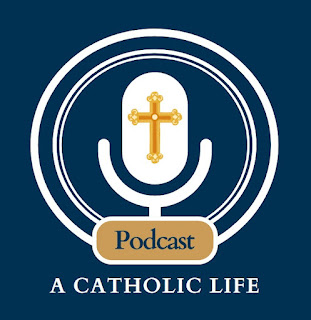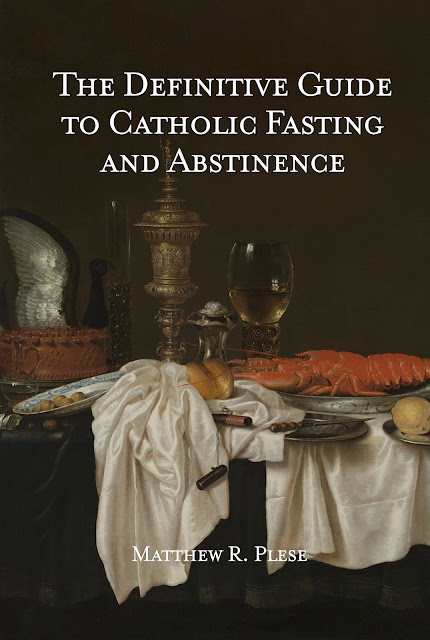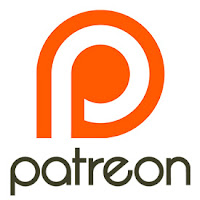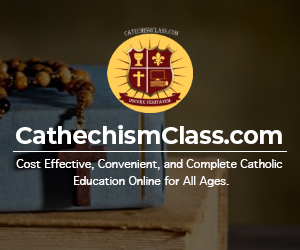It is evident with the crisis in the Catholic Church concerning not only the sexual abuse crisis but also the crisis in the Liturgy after Vatican II that some Catholics have become disillusioned with the current Catholic hierarchy. From an outside perspective, some might ask why they should remain Catholic and not convert to Eastern Orthodoxy, which is known for reverent, ancient liturgies under the name of the Divine Liturgy of St. John Chrysostom (or St. Basil the Great at some times). But on a deeper analysis, there is no refuge in Orthodoxy. While we often think of the Orthodox as schismatics and not as heretics, the doctrinal crisis has also affected them. In fact, the Orthodox are also heretics from the true Christian Faith in more than half a dozen ways as enumerated in the article "Should A Catholic Convert to Eastern Orthodoxy?"
"I am the Father are One" (John 10:30)
The Baltimore Catechism succinctly states, “In God there are three Divine persons, really distinct, and equal in all things – the Father, the Son, and the Holy Ghost.” The Roman Catechism, the most authoritative catechism ever written, expresses the reality that Almighty God – the one and only God – is in fact a Trinity of Persons. The Catechism explains the role of the three Divine Persons in the Incarnation:
"It is a principle of Christian faith that whatever God does outside Himself in creation is common to the Three Persons, and that one neither does more than, nor acts without another. But that one emanates from another, this only cannot be common to all; for the Son is begotten of the Father only, and the Holy Ghost proceeds from the Father and the Son. Anything, however, which proceeds from them extrinsically is the work of the Three Persons without difference of any sort, and of this latter description is the Incarnation of the Son of God.
"Of those things, nevertheless, that are common to all, the Sacred Scriptures often attribute some to one Person, some to another. Thus, to the Father they attribute power over all things; to the Son, wisdom; to the Holy Ghost, love. Hence, as the mystery of the Incarnation manifests the singular and boundless love of God towards us, it is therefore in some sort peculiarly attributed to the Holy Ghost."
We do not believe in three gods but in one God. The Athanasian Creed, one of the earliest professions of faith, confessed since at least the fifth century, declares:
“Thus the Father is God, the Son is God, and the Holy Ghost is God. But there are not three gods, but one God. The Father is Lord, the Son is Lord, and the Holy Ghost is Lord. There are not three lords, but one Lord. For according to Christian truth, we must profess that each of the Persons individually is God; and according to Christian religion, we are forbidden to say that there are three gods or three lords.”
How is it, then, that there is a God the Father, a God the Son, and a God the Holy Ghost, but only one God? There is one divine substance, and three divine Persons. You and I are each only one substance and one person, but God is one substance and three Persons. Each of the Persons is fully divine and wholly possesses the divine substance. As Jesus Himself said, “I and the Father are one” (John 10:30).
The Trinity is One. We do not confess three gods, but one God in three Persons, the “consubstantial Trinity.” The divine Persons do not share the one divinity among Themselves but each of Them is God whole and entire: “The Father is that which the Son is, the Son that which the Father is, the Father and the Son that which the Holy Ghost is, i.e., by nature one God.” In the words of the Fourth Lateran Council (1215): “Each of the persons is that supreme reality, viz., the divine substance, essence or nature.”
What is the Filioque Controversy?
The Great Schism, also known as the East-West Schism, refers to the split between the Eastern Orthodox Churches and the Catholic Church, which culminated in 1054 AD. The Patriarch of Constantinople, Michael Cerularius, and the legates of Pope Leo IX excommunicated each other. This formal declaration of excommunication marked the official schism between the Eastern Orthodox Churches and the Roman Catholic Church. Papal authority, the Filioque controversy, and even the practice of Saturday fasting, among other differences, brought about this schism.
The Filioque controversy is the theological dispute that centers around the phrase "and the Son" (Latin: for Filioque) in the Nicene Creed, which originally stated that the Holy Ghost proceeds from the Father. The controversy arose between the Western and Eastern Christian churches.
In the early centuries of Christianity, the Nicene Creed was widely accepted in both the Eastern (Greek-speaking) and Western (Latin-speaking) parts of the Christian world. The original version of the Nicene Creed, as established at the First Council of Nicaea in 325 AD, declared that the Holy Ghost proceeds from the Father. However, the Western Church later added the phrase "and the Son" (Filioque) to affirm the double procession of the Holy Spirit from both the Father and the Son.
The Roman Catholic Church had first introduced the phrase “and the Son” (Filioque in Latin) at the Third Council of Toledo in 589. The Lyons Council II stated the doctrine firmly:
We profess faithfully and devotedly that the Holy Ghost proceeds eternally from the Father and the Son, not as from two principles, but as from one principle; not by two spirations, but by one single spiration. This the holy Roman church, mother and mistress of all the faithful, has till now professed, preached and taught; this she firmly holds, preaches, professes and teaches; this is the unchangeable and true belief of the orthodox fathers and doctors, Latin and Greek alike. But because some, on account of ignorance of the said indisputable truth, have fallen into various errors, we, wishing to close the way to such errors, with the approval of the sacred council, condemn and reprove all who presume to deny that the Holy Ghost proceeds eternally from the Father and the Son, or rashly to assert that the Holy Ghost proceeds from the Father and the Son as from two principles and not as from one.
The Filioque Defended at the Ecumenical Councils
The Second Council of Lyons began on May 7, 1274, in the Cathedral of St. John. The Pope gave a sermon outlining his threefold plan for the Council — to unite the Roman Catholic and Greek Orthodox Churches, to send a Crusade to the Holy Land and to reform the morals of the clergy. On June 29th, the feast of Saints Peter and Paul, the entire Council and the Greek ambassadors took part in a High Mass sung by the Pope. The Credo (Nicene Creed) was sung in Latin and then again in Greek with the phrase “Qui a Patre Filioque procedit” (who proceeds from the Father and the Son) sung three times. The Greek acceptance of this doctrine was an important step towards the reunion of the two Churches.
Yet, debate continued for centuries as this was again a point of disagreement at the Council of Florence in 1438. The Emperor and Patriarch agreed that the debates should begin, and on October 8, 1438, the delegates discussed the addition of “From the Son” (Filioque) to the Nicene Creed by the Roman Catholic Church. This was discussed in fourteen public sessions until December 13, 1438. Mark Eugenicus, the Metropolitan of Ephesus, claimed that the addition of the Filioque clause to the Nicene Creed had been against the Council of Ephesus in 431. While Mark Eugenicus was the main speaker for the Greeks, the Western Church answered through several speakers. The sessions were lively but the Latin speakers were unable to change Mark’s position.
March 1439 saw eight sessions between the 2nd and 24th where the procession of the Holy Ghost was debated. The Western Church argued that the Holy Ghost proceeded from the Father and the Son while the Greek Church through Mark Eugenicus insisted that the Holy Spirit proceeded from the Father only. Giovanni da Montenero, a Dominican provincial of Lombardy proved the Latin Church’s assertion through the use of Scripture, the writings of the Western and Eastern Fathers and the Councils. Da Montenero’s presentation convinced some of his hearers but not all. The Greeks were not used to metaphysical arguments or syllogisms in their theological discussions but they were very impressed by da Montenero’s quotes from the Eastern and Western Fathers.
Through this, a glimmer of light appeared. The Eastern Saints had stated that the Holy Ghost was produced “from both” and “through the Son” while the Western Saints wrote that the Holy Spirit came “from the Father and the Son.” Now it is axiomatic that Saints, whether East or West, cannot err in matters of faith for they are inspired by the same Holy Spirit. Therefore the words of both the Eastern and Western Saints must be true even though they expressed themselves differently. Bessarion, the Metropolitan of Nicaea and Greek delegate, phrased it this way: "The western and eastern Saints do not disagree, for the same Spirit spoke in all the Saints. Compare their works and they will be found harmonious."
The majority of the Greek delegates voted in favor of the Filioque doctrine. There were further debates about other points of contention. It was decided that both unleaven and leaven bread would be allowed for the Eucharist. Purgatory was defined and the primacy of the Pope was affirmed. None of these questions were answered without lengthy debate and it was not until July 5, 1439, that first the Greeks and then the Latin delegates signed the decree of union. (Parts of the decree are included in the Documents section beginning “Let the heavens rejoice…”) Mark Eugenicus refused to sign the decree even after discussions with the Pope. On Monday, July 6, there was a procession to the Cathedral in Florence followed by a Pontifical Mass. Cesarini read out the decree in Latin, asking the Pope and Latin prelates if they agreed. They all proclaimed Placet (it is agreed upon). Bessarion read out the decree in Greek then requested the Emperor and the Greek prelates to acknowledge the truth of the decree. They also stated their agreement. A Te Deum was sung and the delegates left the Cathedral praising God with psalms. The Council continued and reunited the Roman Church with other Eastern Churches — the Armenians (1439), the Copts (1442), the Syrians (1444), the Chaldeans (Nestorians) and the Maronites of Cyprus (1445). In 1443, the Council left Florence to continue at the Lateran Palace in Rome.
The Greeks left for home on October 19, 1439, and arrived in Constantinople in February 1440. Sad news awaited the Emperor — his wife had died. This may explain why he failed to act promptly when some of the Eastern prelates who had remained behind in Constantinople refused to have anything to do with those who had agreed to a union with the Roman Church in Florence. There were soon more overt acts against the union of the Churches. Anthony, Metropolitan of Heraclea, made a public repudiation of his signature to the document in Florence. Mark Eugenicus wrote and spoke against the union. Early in 1441, a group of prelates who had signed the decree in Florence disavowed the union.
The new Patriarch of Constantinople, Metrophanes, (Patriarch Joseph had died at the end of the Council of Florence) declared in favor of the union and wrote an encyclical proclaiming it. However, his voice was not enough to overpower the flair and common touch of Mark Eugenicus’ writings. In 1444 the Papal fleet and army joined with Venice and Hungary to fight the Ottoman Turks. The Turkish army of about 60,000 men attacked the Christian armies of about 20,000 to 30,000 men at Varna on November 10, 1444. A brave effort to capture Murad II, the leader of the Ottomans, by the young King of Hungary and his 500 horsemen failed and the Christians were defeated. Many Christians were killed and the way to Constantinople was open to the Turks who did indeed capture the city in 1453. In the years 1450 to 1451, the Eastern Orthodox Church convened a Council in Constantinople and rejected the decree from the Council of Florence. The pro-union Patriarch was dismissed and the Orthodox Athanasius was appointed to take his place.
So what was the point of those years of arguments, of careful research, of endless discussions? Even though the union did not last, several points of doctrine were discussed and defined. Giovanni da Montenero’s masterful examination of the procession of the Holy Spirit through Scripture, the writings of the ancient Fathers and the Councils is just one example of the intricate and intense work that went into these definitions. For those years in Ferrara, Florence, and Rome, hundreds of men gathered to understand difficult theological concepts with the sincere wish to reunite. Perhaps in some hearts, this wish was joined with the hope for help in defeating the Turks or other less than purely selfless motives. Still, they continued — the illness of the elderly Patriarch and the Emperor, the monetary difficulties of the Pope, the homesickness and worry over their homeland, the frustrations between two different cultures — and all of these pressures delivered arguments that give us a deeper understanding of our faith. For more on the Councils, see the book "
Nicea to Now."
The Church Fathers Defended the Filioque
Church Fathers in the West, such as St. Augustine of Hippo (354–430), supported the Filioque clause. St. Augustine emphasized the unity of the Trinity and argued that the Holy Ghost's procession from both the Father and the Son was consistent with the shared divine essence of the Trinity.
The Orthodox churches - and there are several that are not in communion even with one another - deny that the Holy Ghost, the Third Person of the Most Blessed Trinity, proceeds from the Father and the Son. Those interested in the Church's treatment of this should look into Father Henry Chadwick's "The Early Church" or "Fr. John Meyendorff's "Byzantine Theology," which address this well. The Church Fathers all believed in the Filioque as well as shown in a powerful video debunking the errors of the Orthodox churches. All those who want to learn the truth should be compelled to watch that video.





.jpg)

.PNG)












.jpg)







